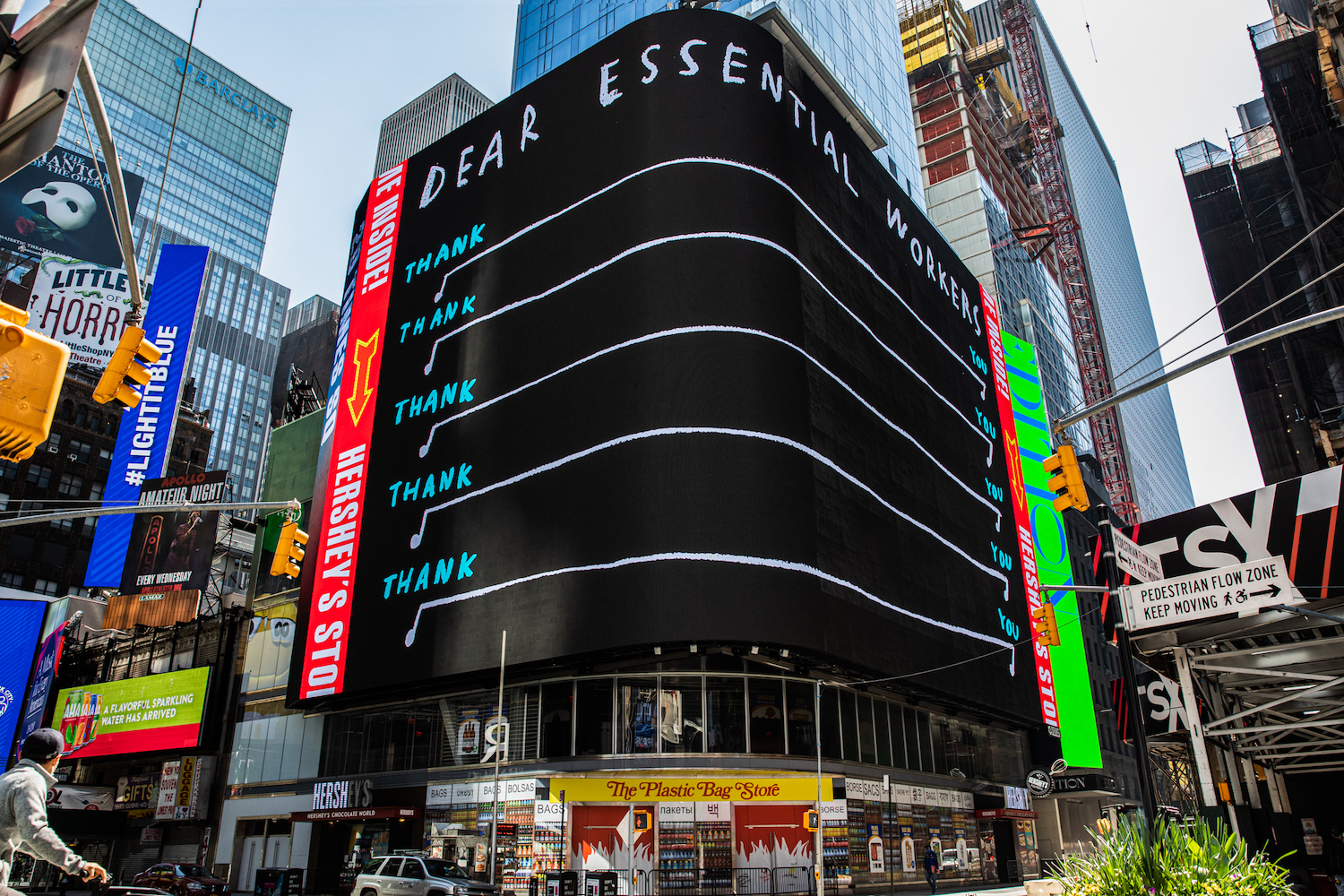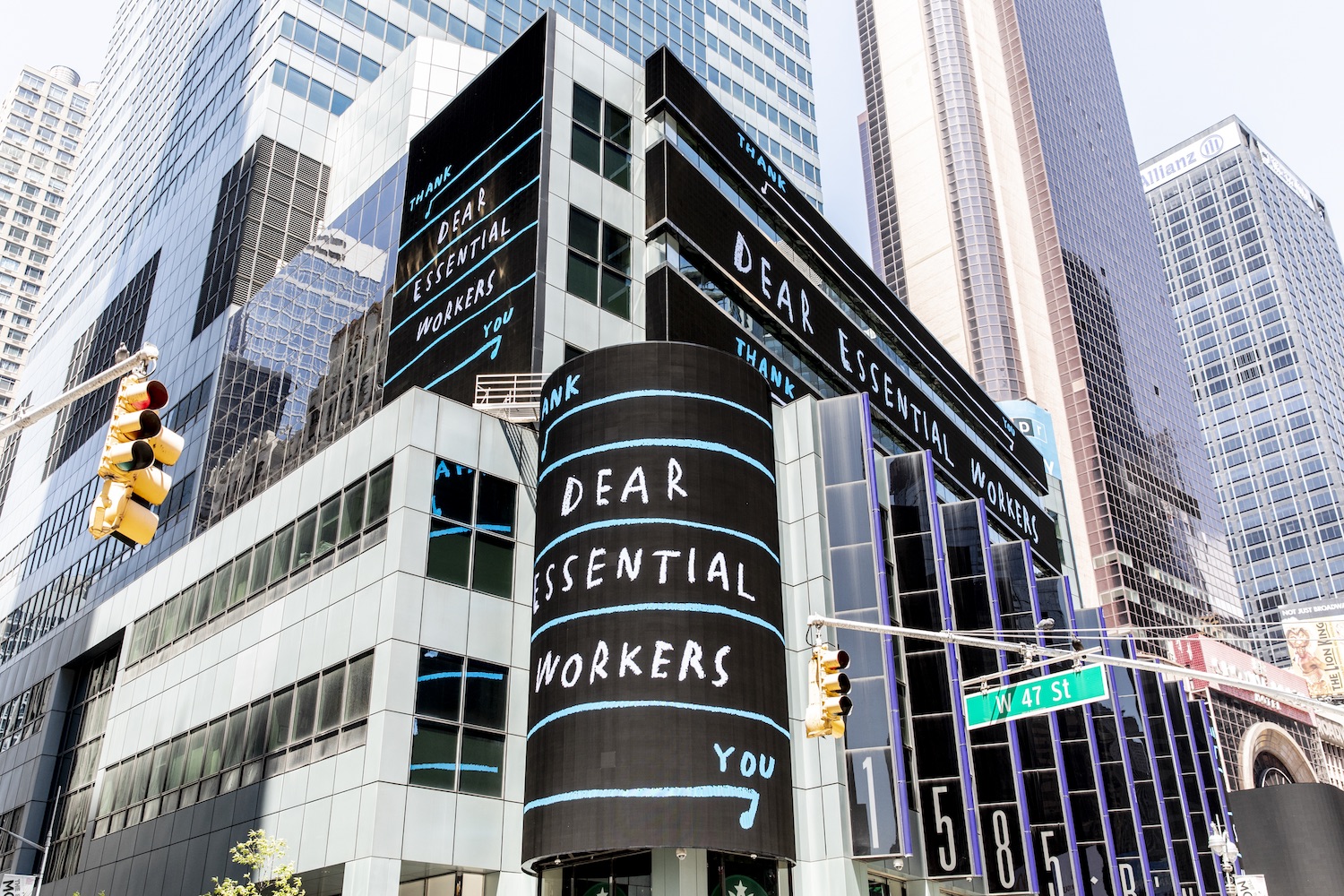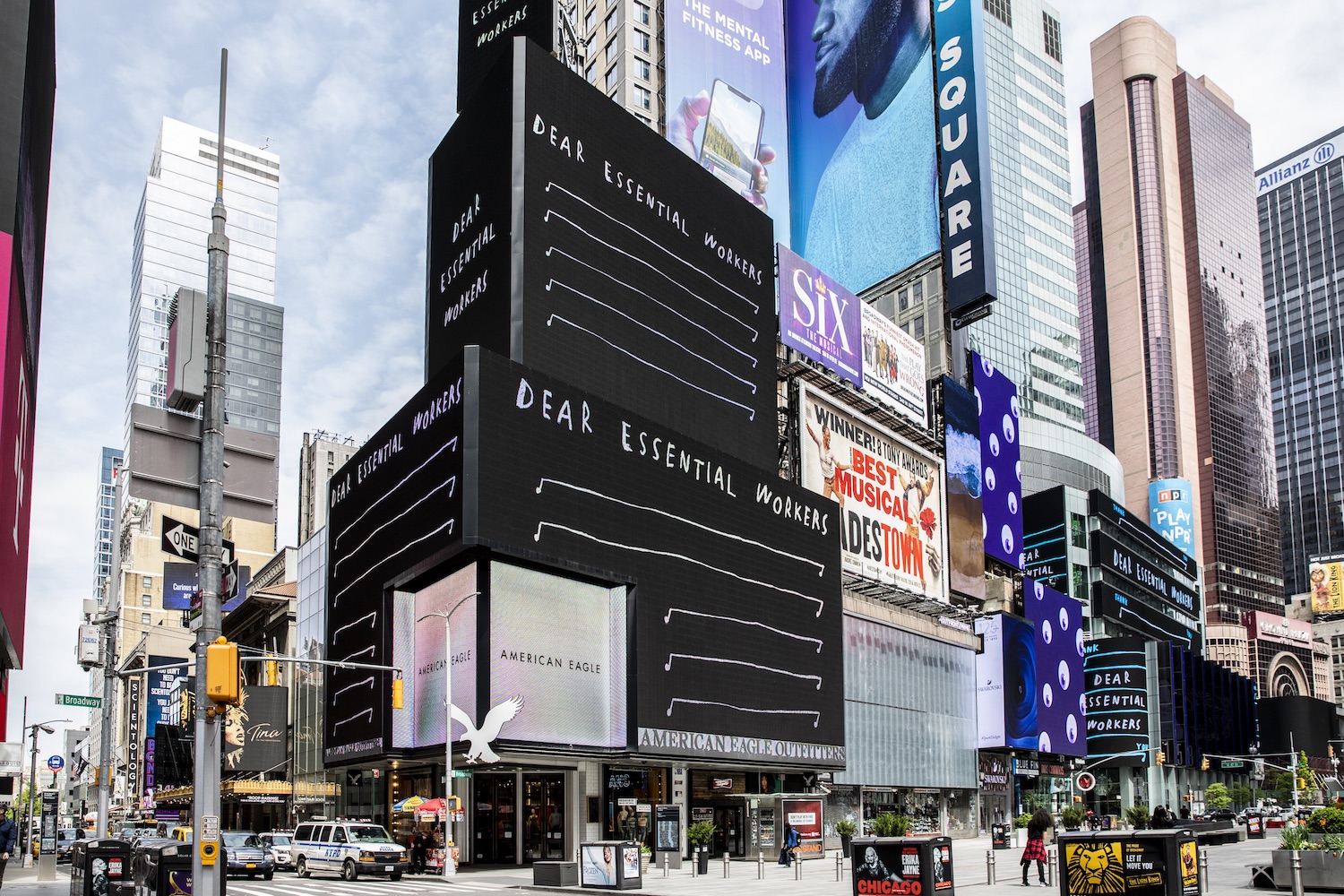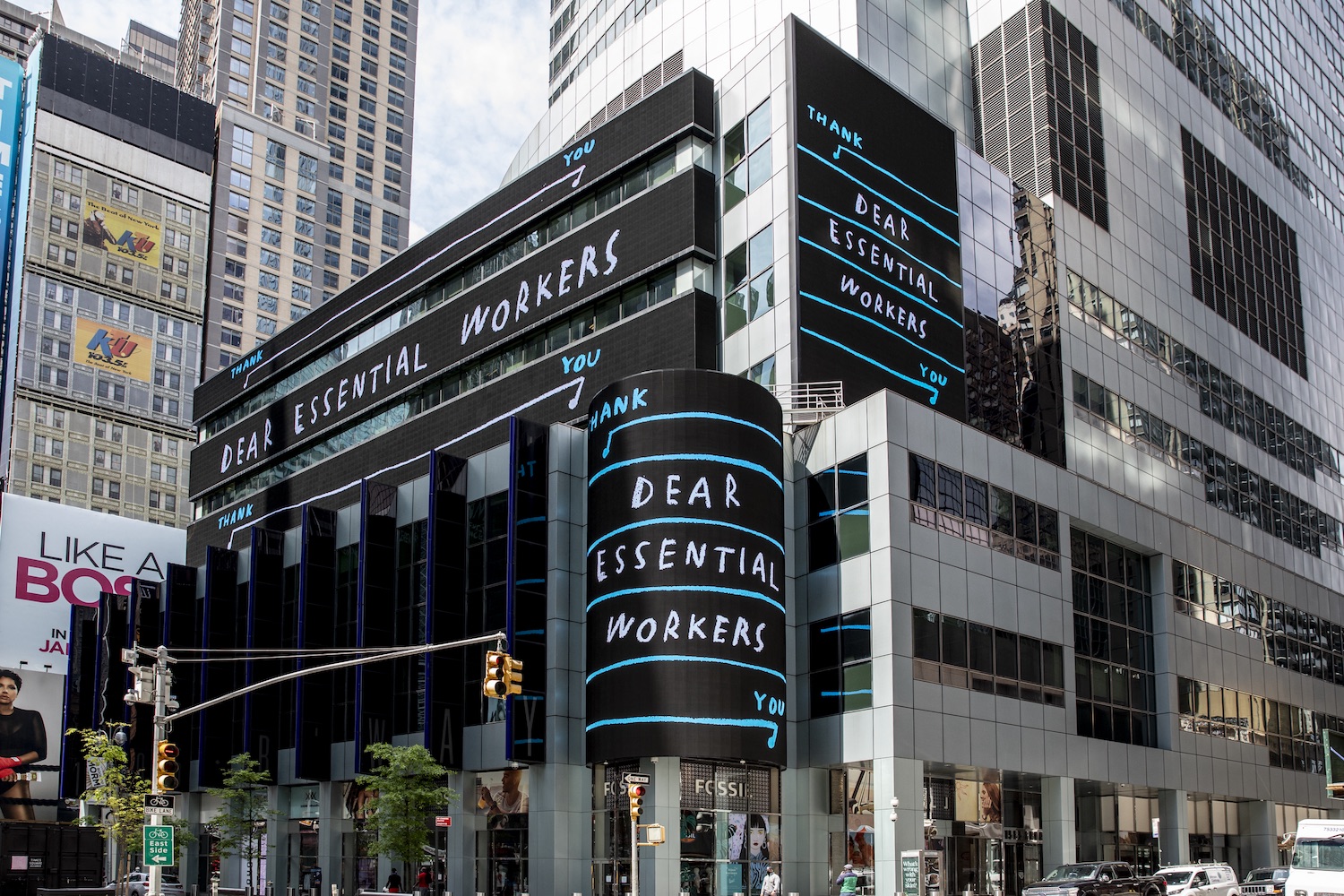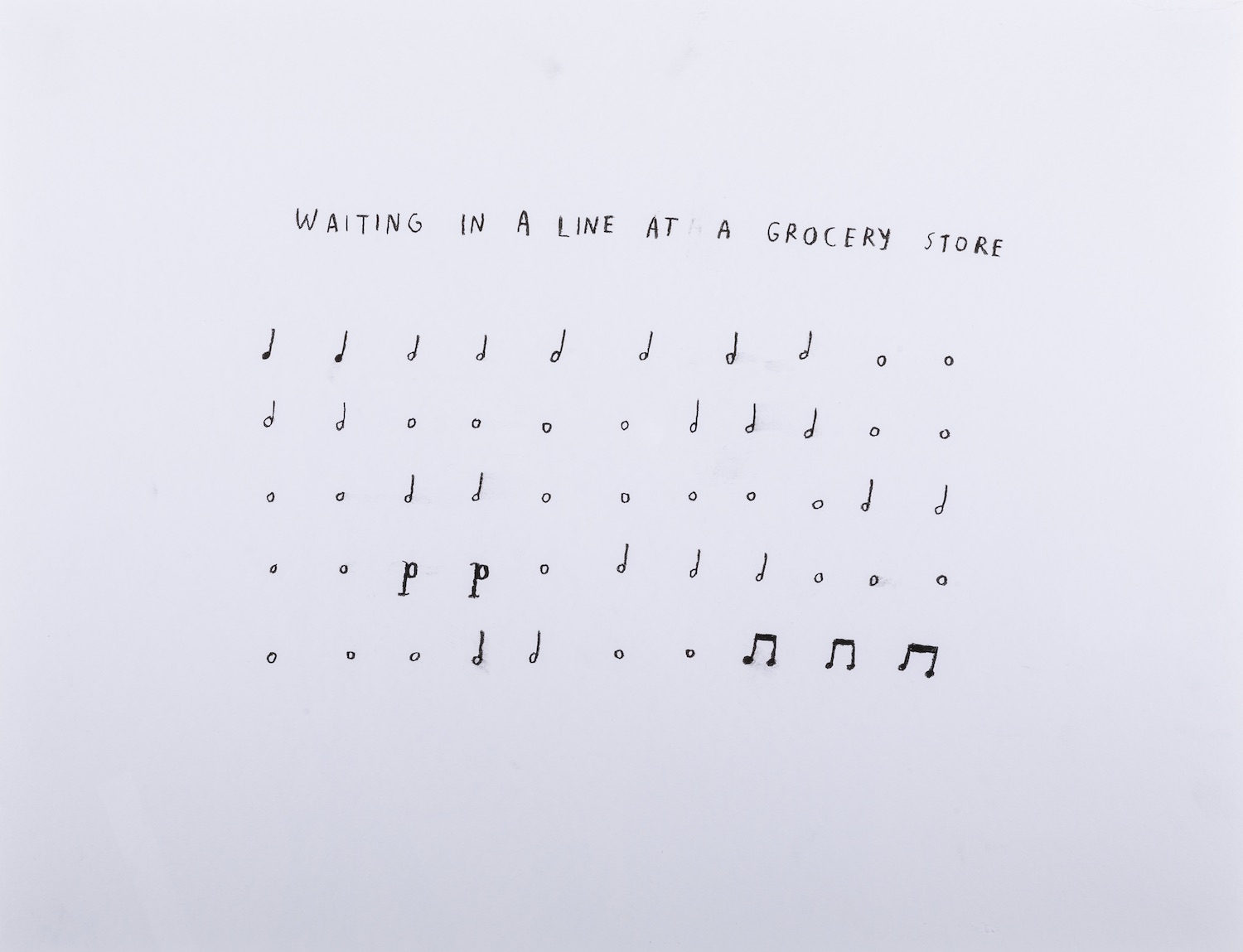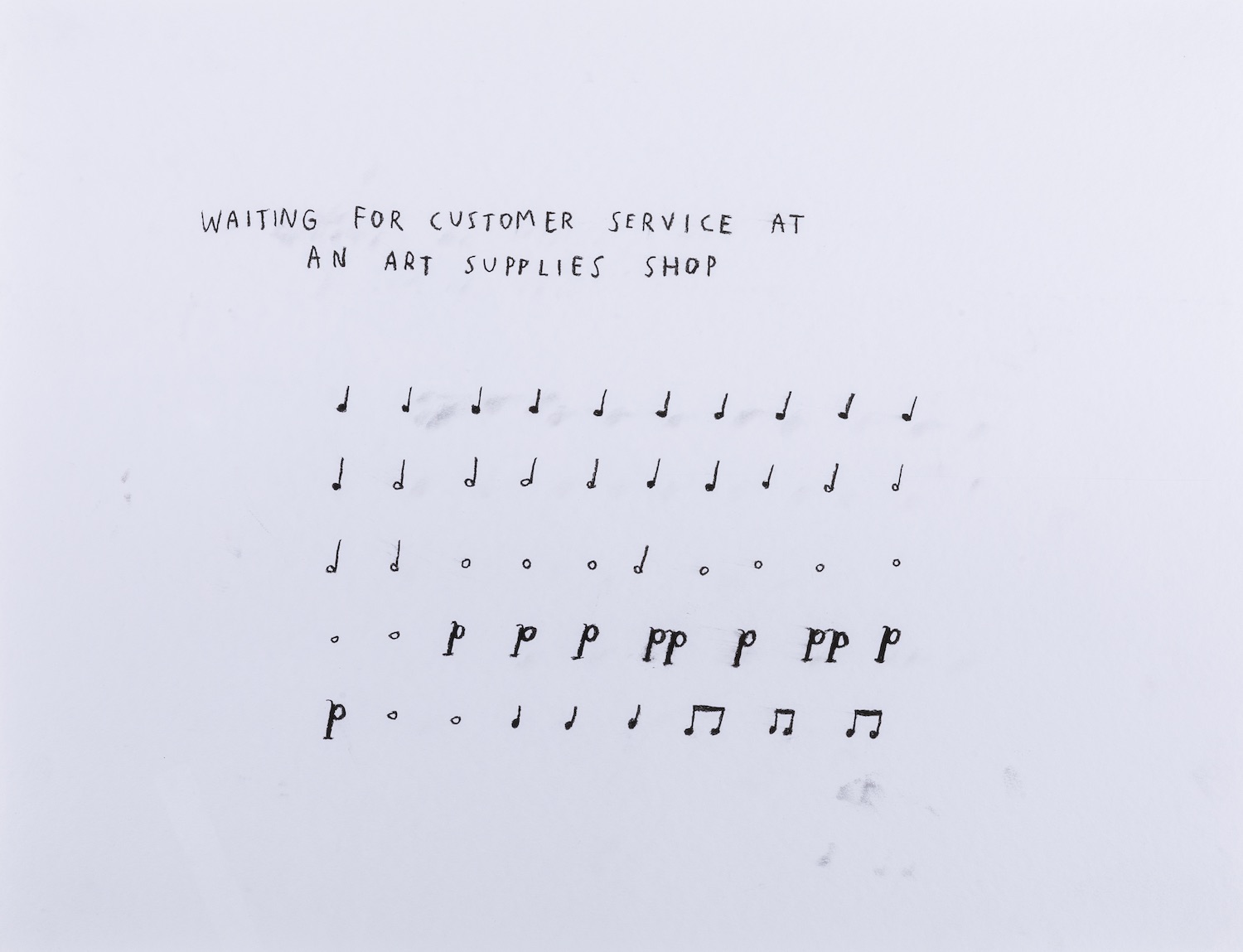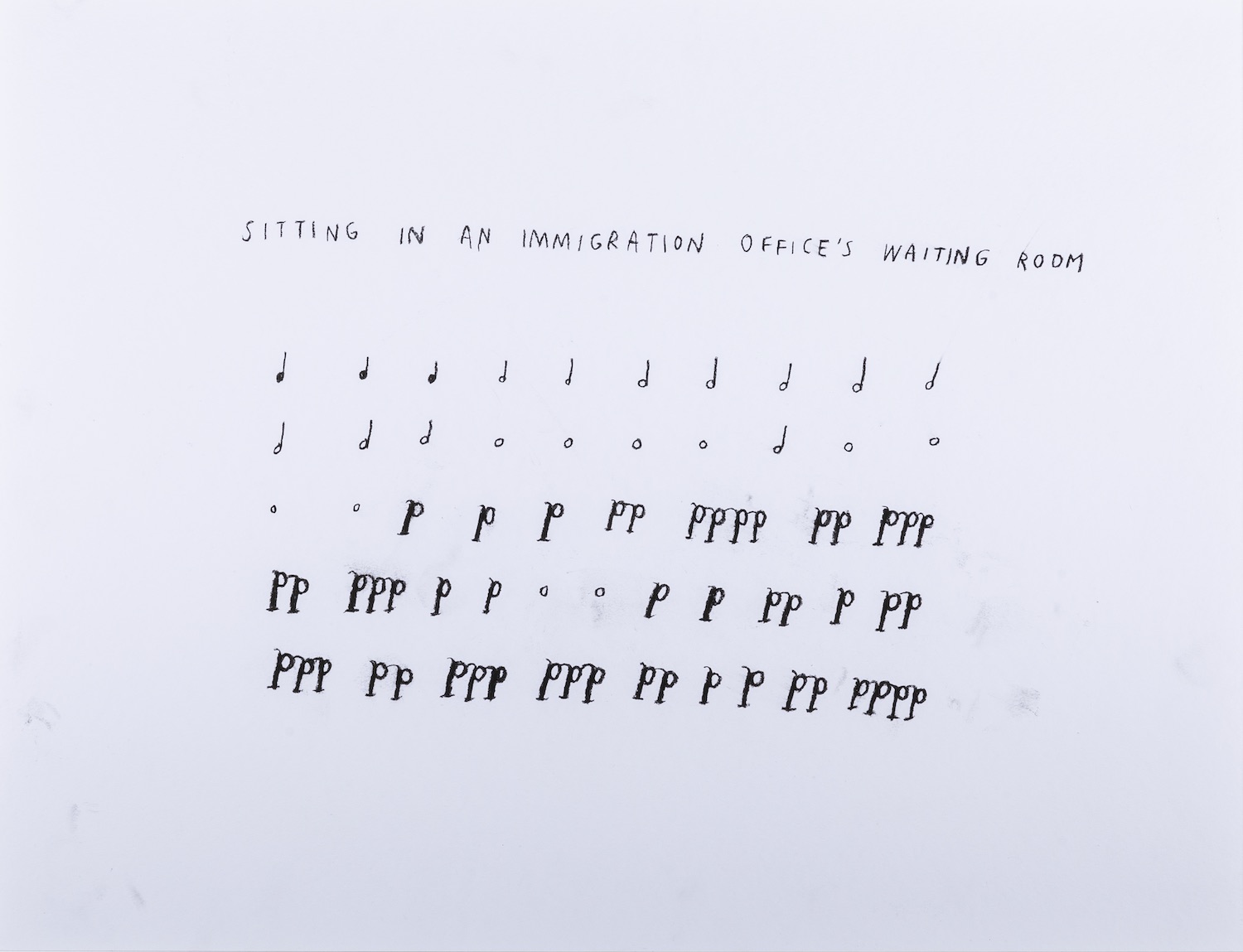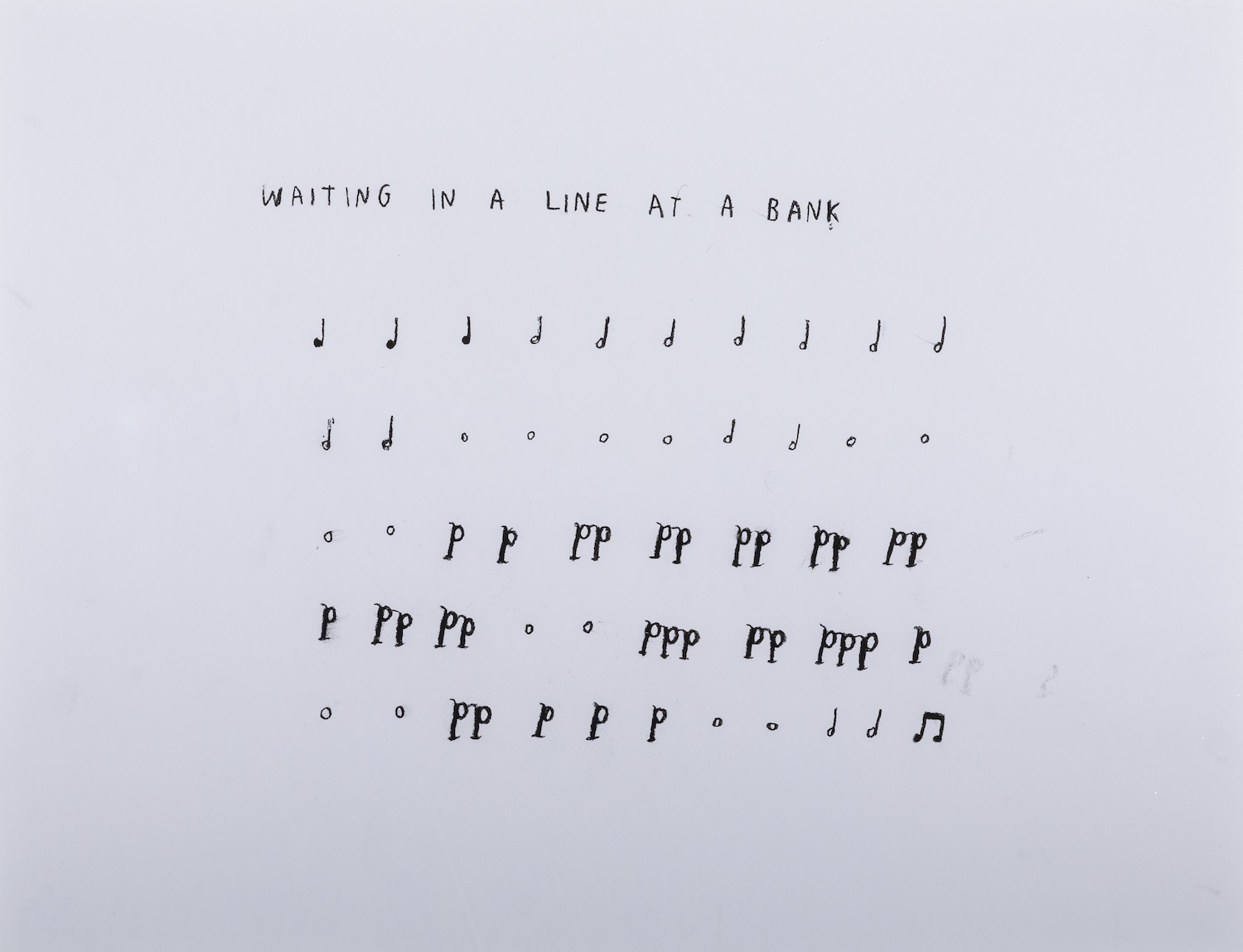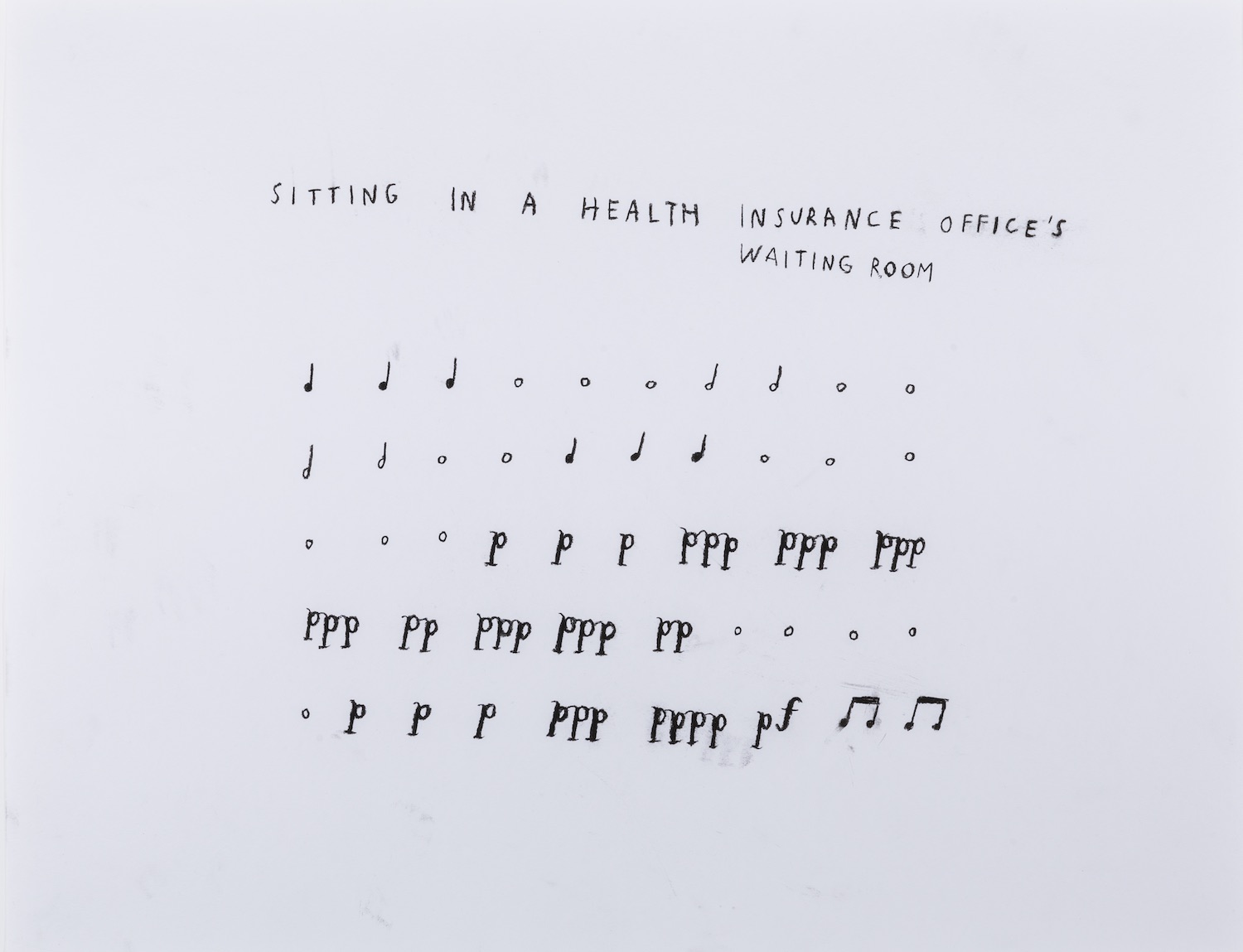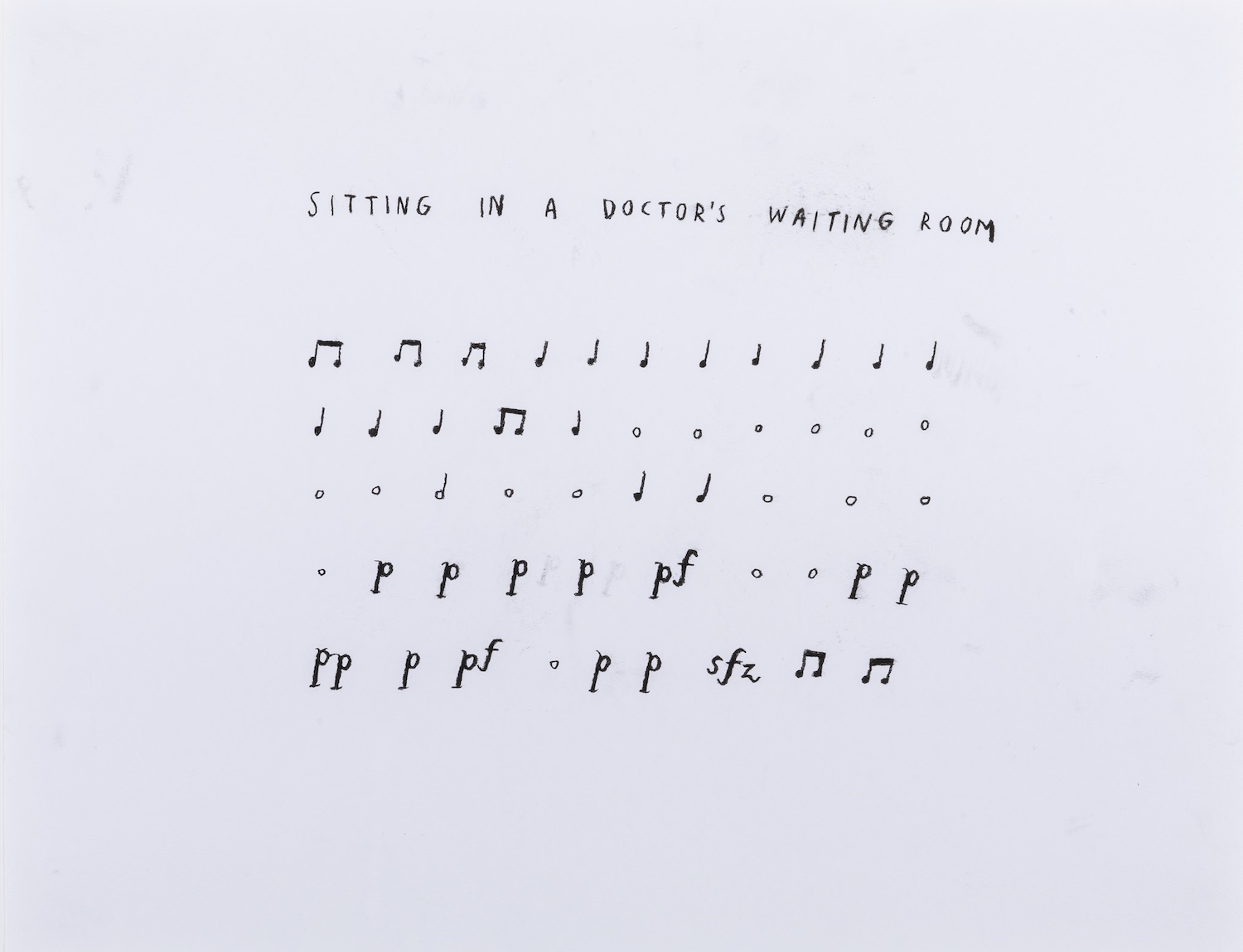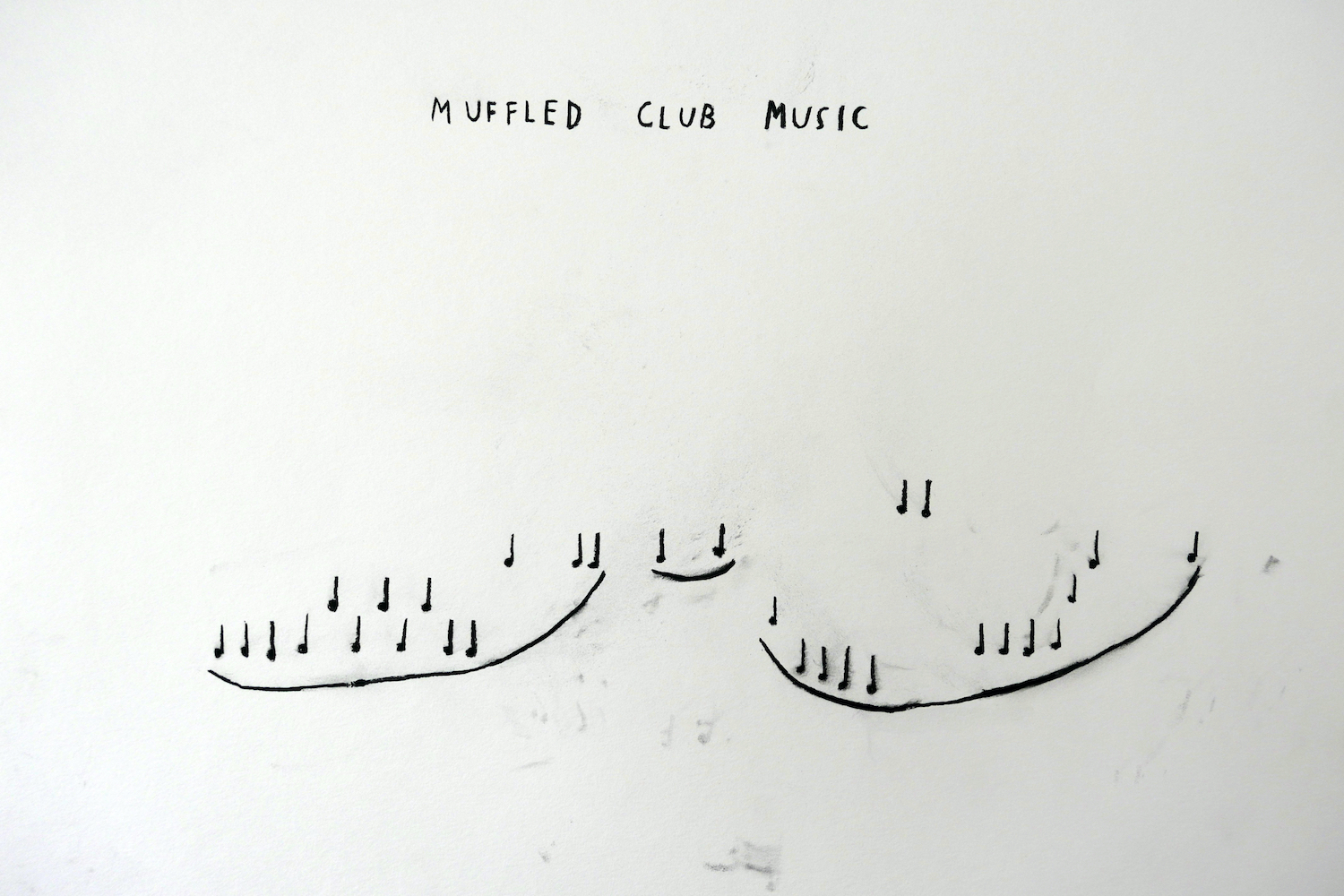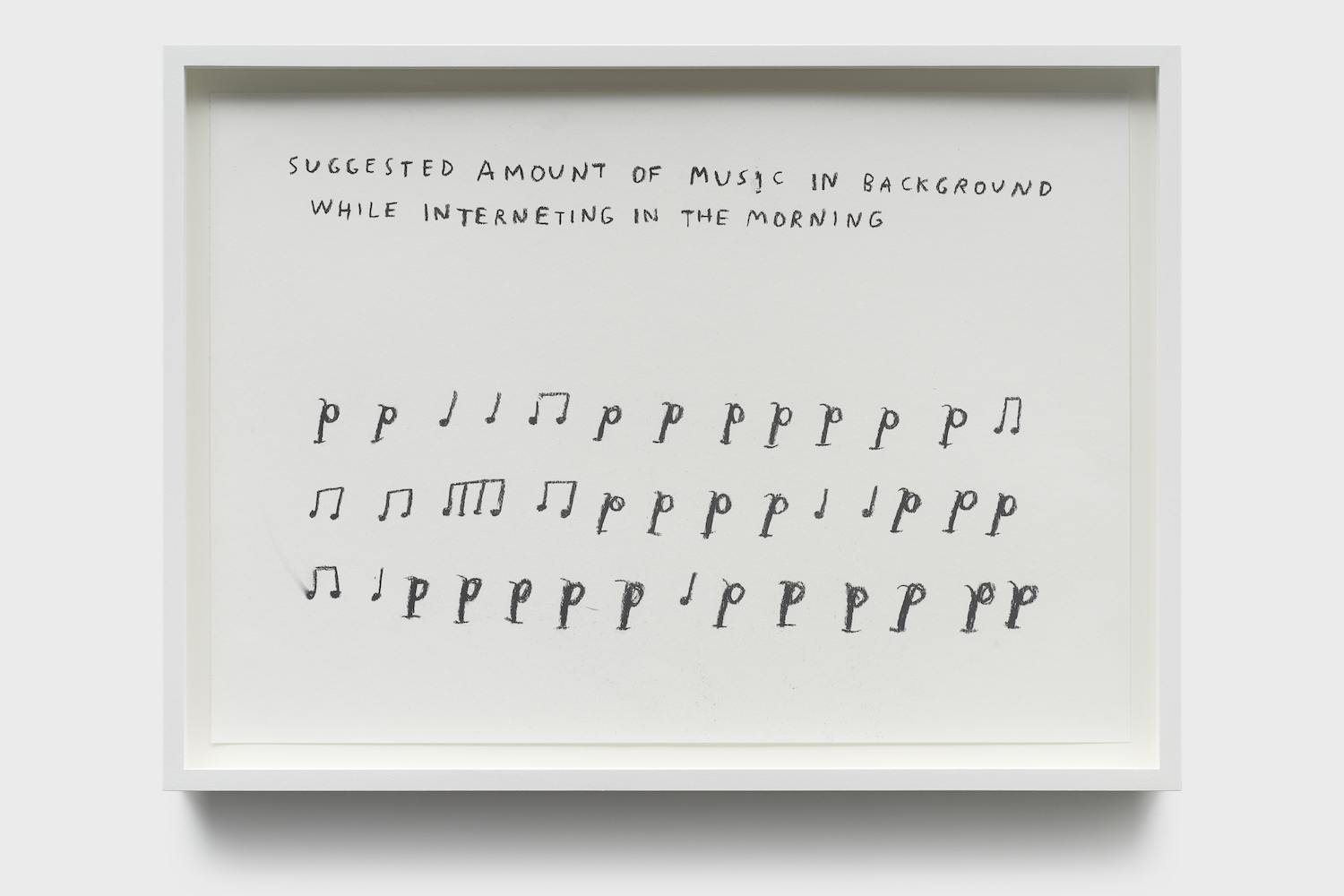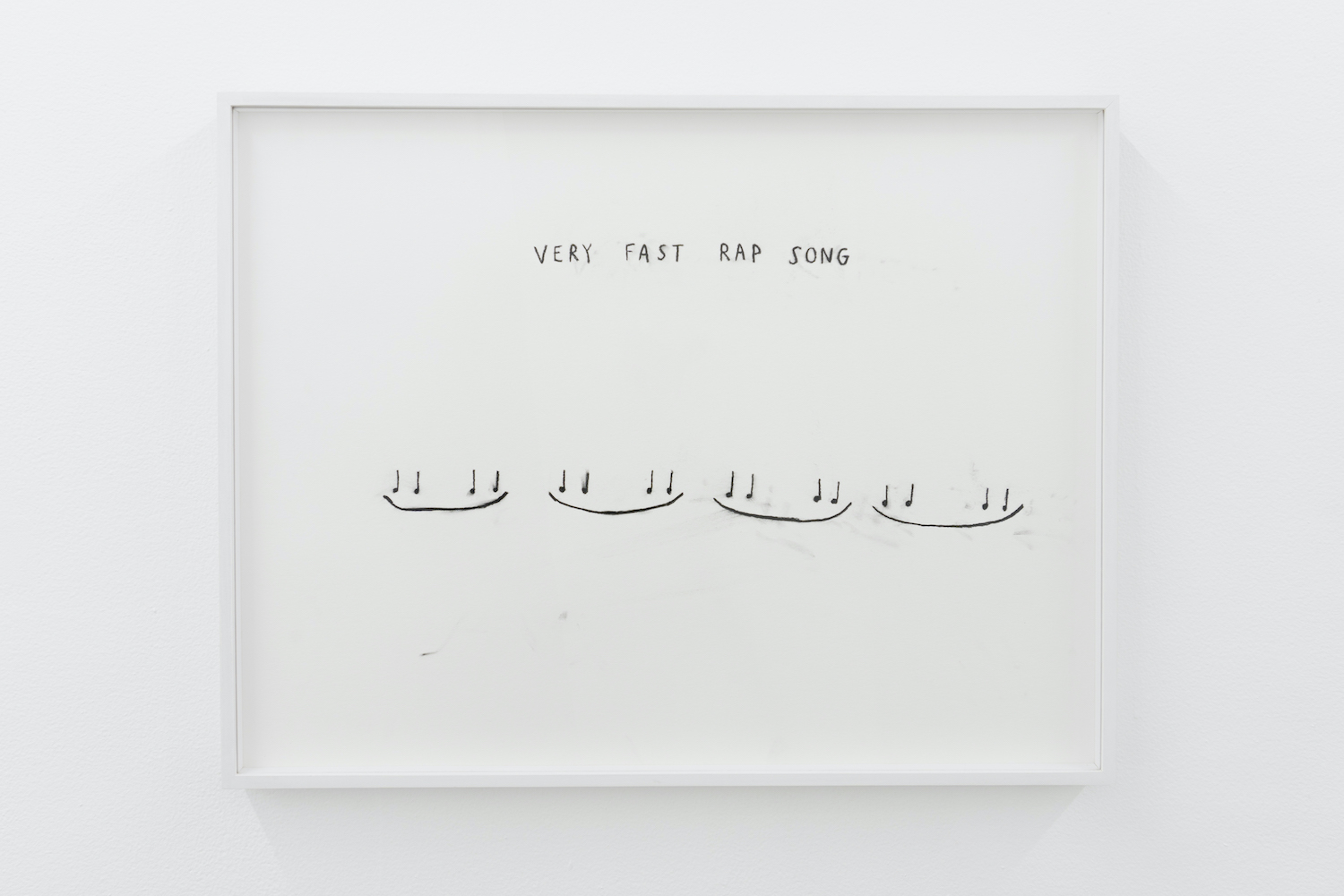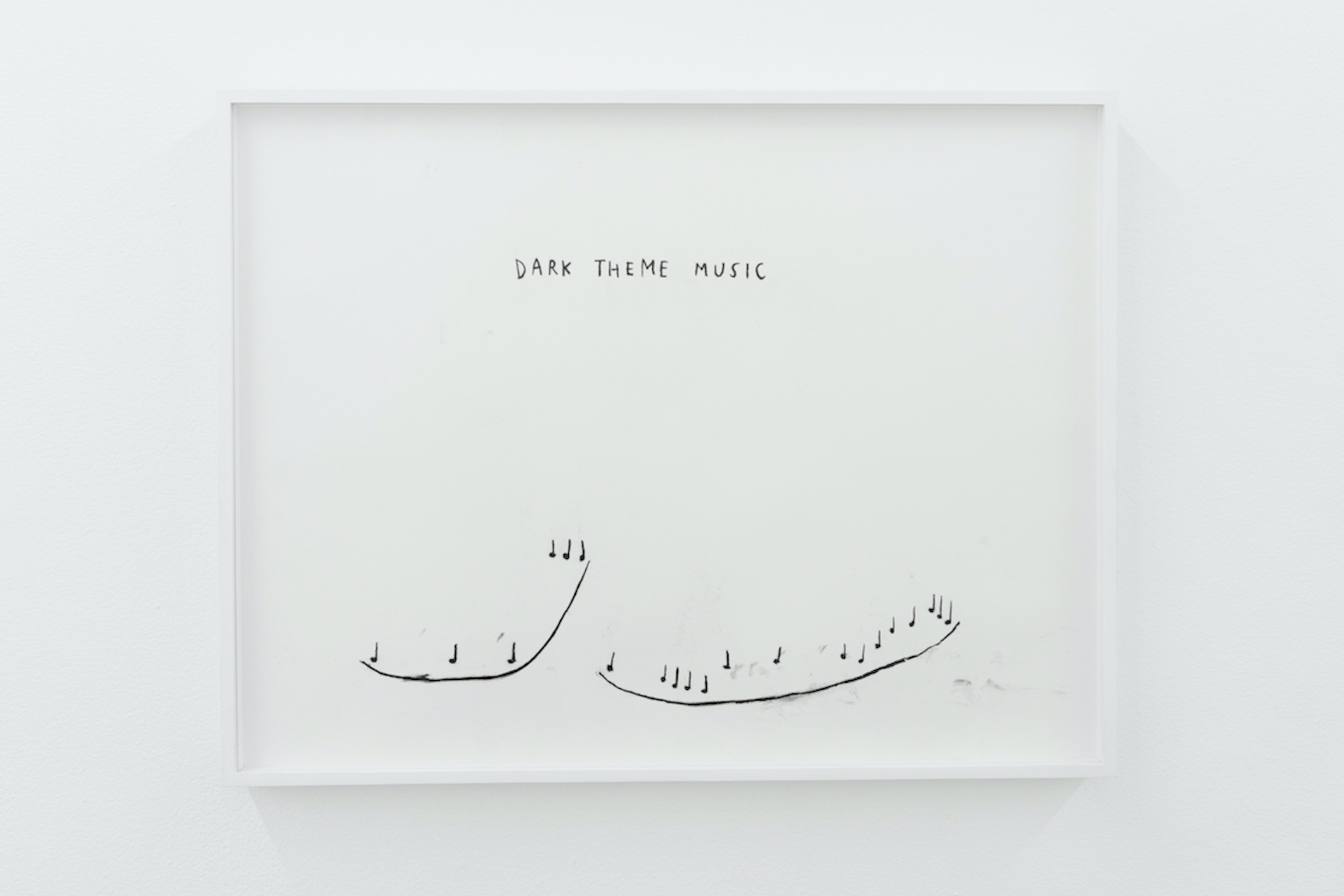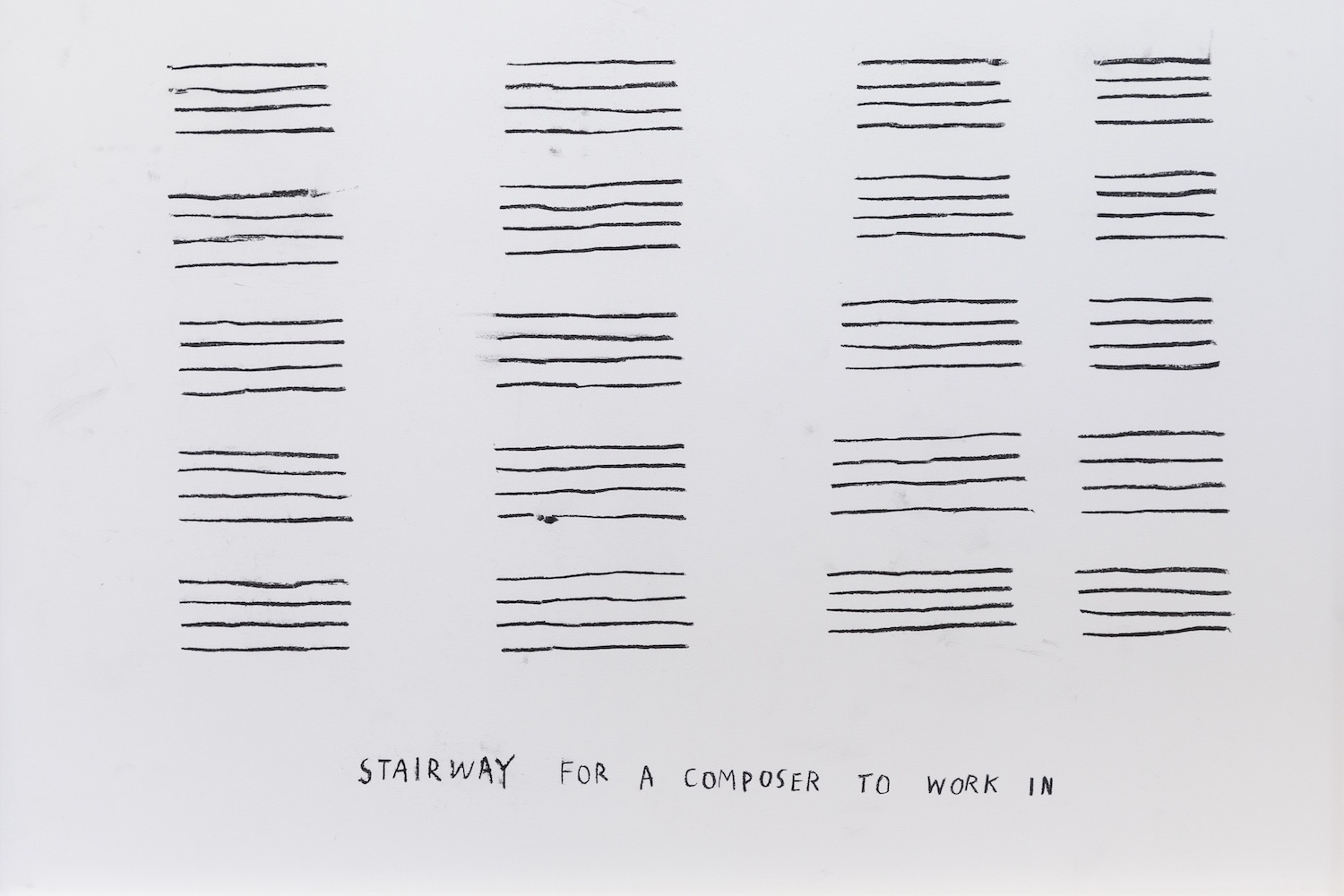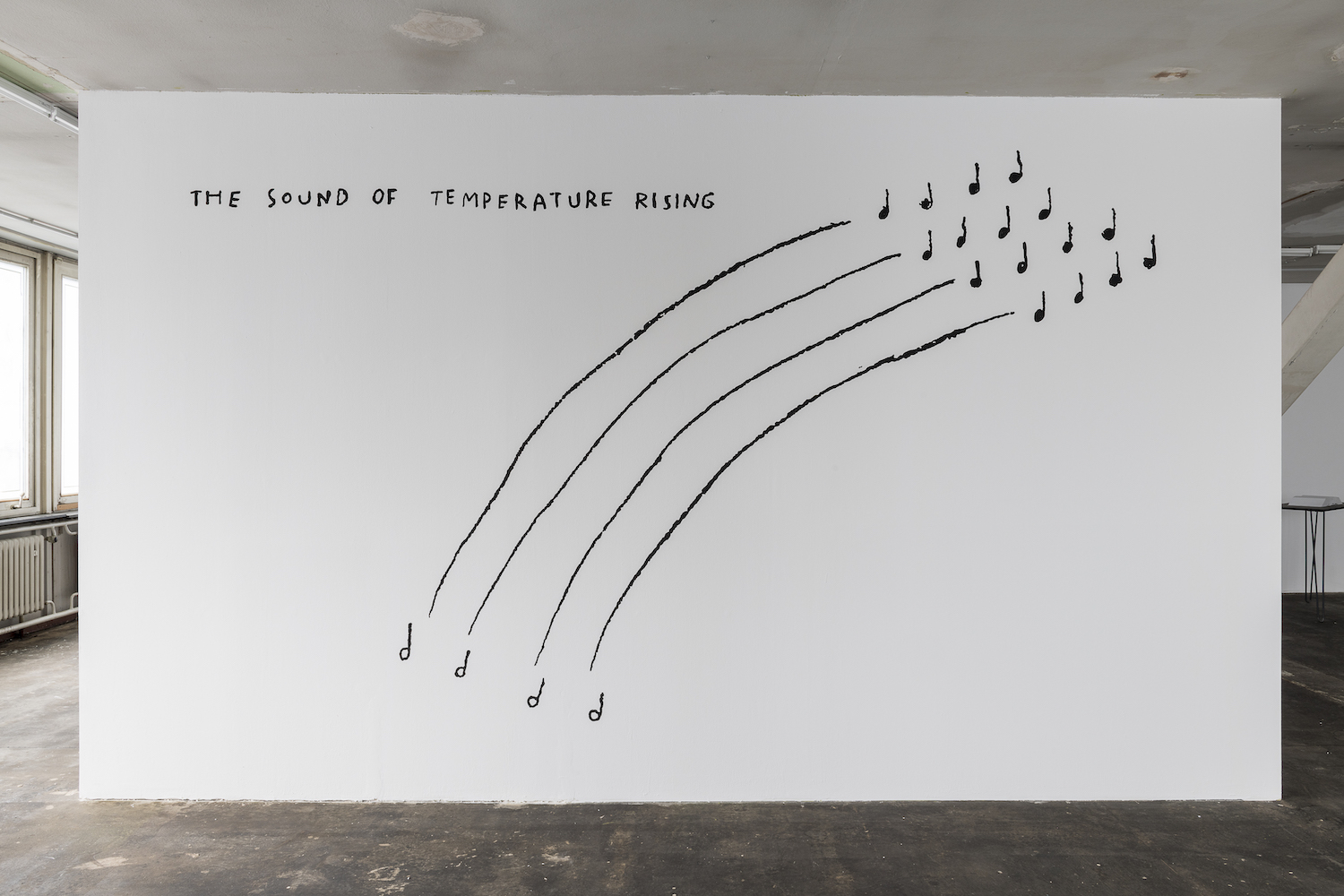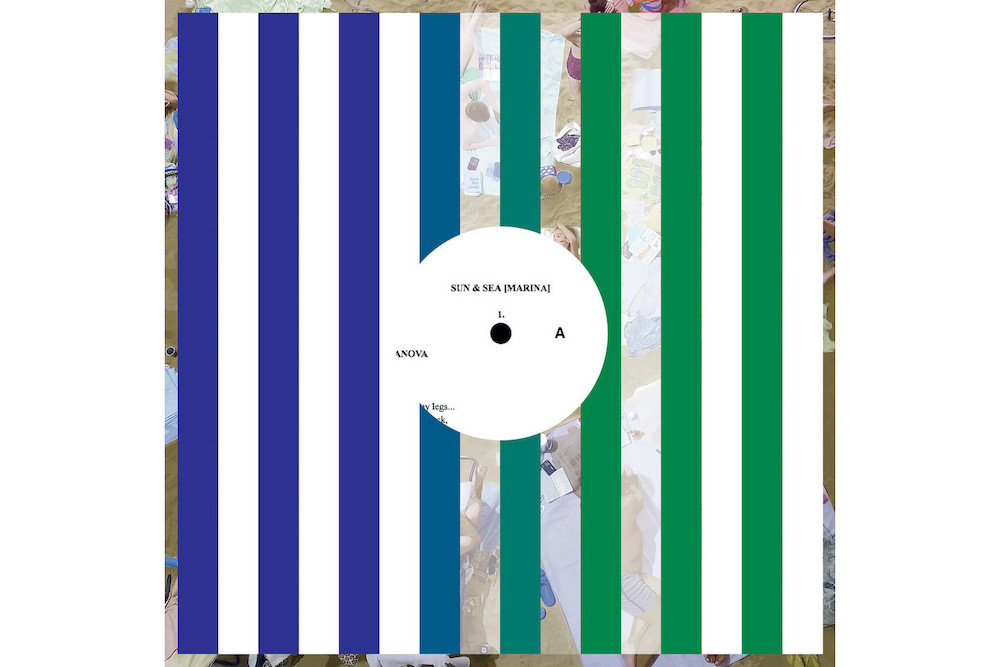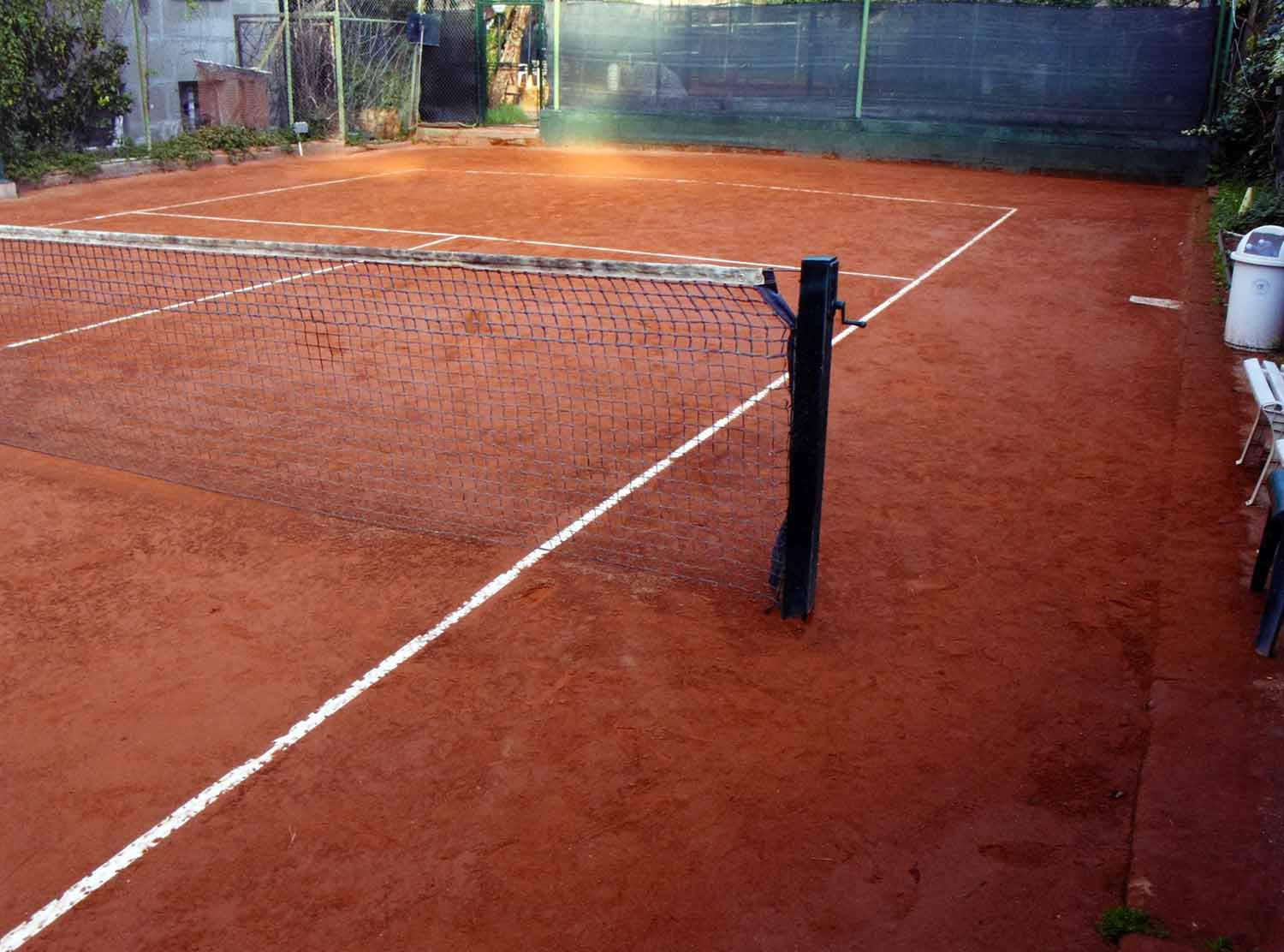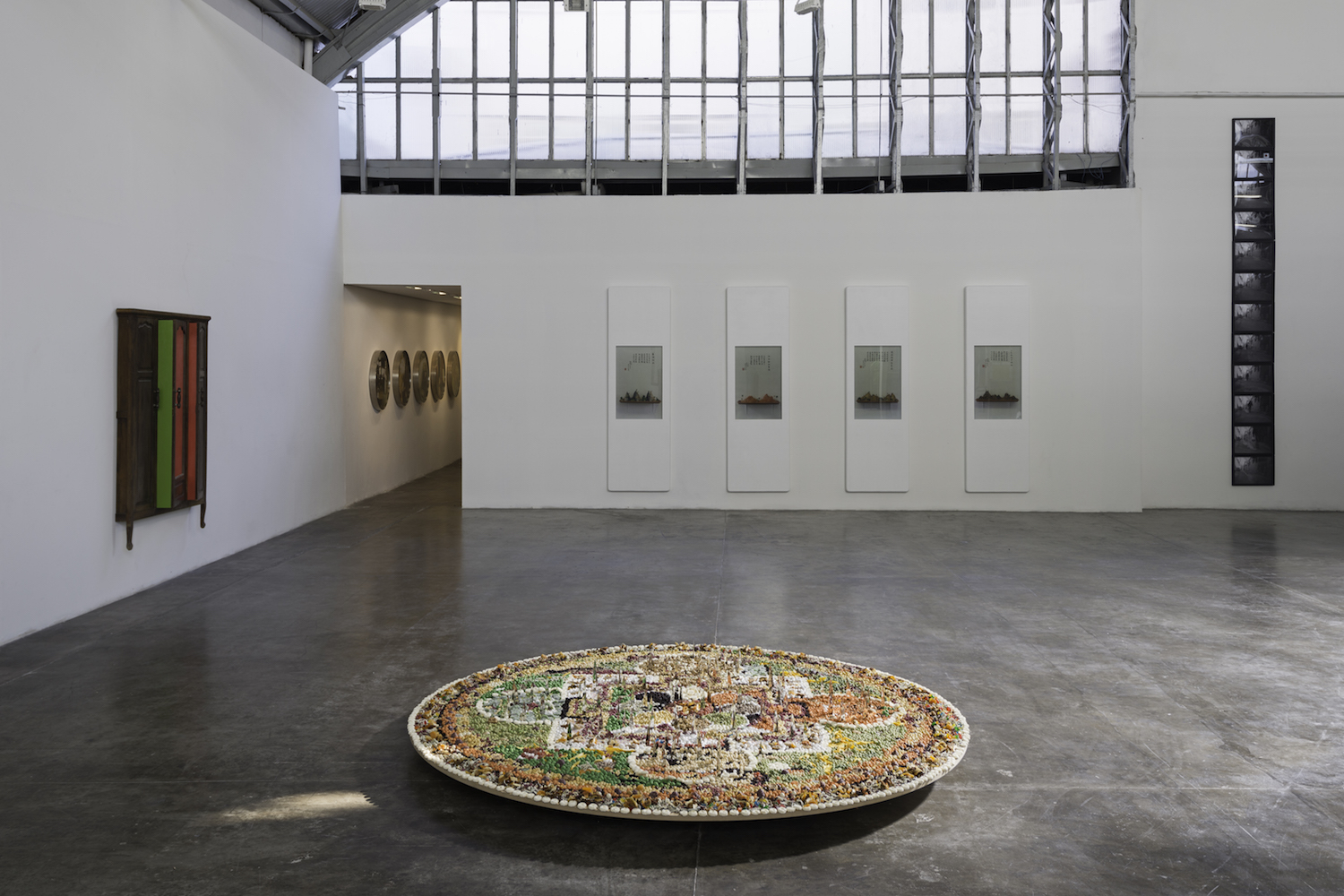“Listening In” is a column dedicated to sound, music, and listening practices in contemporary art and its spaces. This section focuses on how listening practices are being investigated and reconfigured by artists working across disciplines in the twenty-first century.
Handwritten in white uppercase letters at the top of several large digital billboards in Times Square, New York City, is the salutation “Dear Essential Workers.” Underneath are five hand-drawn, beamed eighth notes, stacked one on top of the other. The note heads are spaced wide enough apart that the beams connecting them double as five lines of a blank musical staff, in one case rounding the bottom corner of a skyscraper. A second passes before the words thank and you appear in the same handwriting, this time in pale blue: a thank for each of the note heads on the left side of the screen, and a you for each on the right. The regularity of the flashing thank you’s and their syllabic setting, read left to right, cues the viewer to clap, say, or sing the words — internally or aloud — in support of New York’s frontline workers, echoing the daily 7:00 p.m. citywide #ClapBecauseWeCare. The empty staff lines, by contrast, prompt quiet reflection, an invitation to stand still and hold space in what is an otherwise busy, boisterous commercial arena, so that we might grieve the thousands of lives lost to COVID-19. Striking in its concision, the ode conveys sincerity and intimacy in the midst of prolonged social isolation: it is part of a collaborative art campaign honoring essential service workers through digital “public service announcements” in New York, Boston, and Chicago, featuring pieces by more than thirty artists and designers.1
 “Dear Essential Workers” is the work of US-born, Berlin-based sound artist and composer Christine Sun Kim, and is the latest in her expanding repertoire of visual music, handwritten epigrams accompanied by a repetition of a singular musical cue: p, f, rests, bar lines, and other symbols drawn from Western musical notation. Since her emergence in the early 2010s, Kim has established a distinctive, multidisciplinary practice that includes drawing, performance, installation, and video. Her approach centers on “unlearning” what she terms “sound etiquette,” a set of naturalized behavioral codes that dictate when and when not to make sound, an invisible social contract that divides sharply along the lines of hearing and deafness. Kim elaborates: “They [hearing people] would tell me: ‘be quiet. Don’t burp, don’t drag your feet, make loud noises.’ I learned to be respectful of their sound. I saw sound as their possession.”2 As the daughter of Korean immigrants learning English and American Sign Language (ASL) simultaneously, Kim was also acutely aware of the ways sound reflected on her race and gender as she sought to internalize the social norms of the hearing majority. Kim ultimately discards this repressive social conditioning in her work, where she freely explores the “physicality of sound” through movement, visual cues, and sign language, reimagining the ontological contours of music in the process.3
“Dear Essential Workers” is the work of US-born, Berlin-based sound artist and composer Christine Sun Kim, and is the latest in her expanding repertoire of visual music, handwritten epigrams accompanied by a repetition of a singular musical cue: p, f, rests, bar lines, and other symbols drawn from Western musical notation. Since her emergence in the early 2010s, Kim has established a distinctive, multidisciplinary practice that includes drawing, performance, installation, and video. Her approach centers on “unlearning” what she terms “sound etiquette,” a set of naturalized behavioral codes that dictate when and when not to make sound, an invisible social contract that divides sharply along the lines of hearing and deafness. Kim elaborates: “They [hearing people] would tell me: ‘be quiet. Don’t burp, don’t drag your feet, make loud noises.’ I learned to be respectful of their sound. I saw sound as their possession.”2 As the daughter of Korean immigrants learning English and American Sign Language (ASL) simultaneously, Kim was also acutely aware of the ways sound reflected on her race and gender as she sought to internalize the social norms of the hearing majority. Kim ultimately discards this repressive social conditioning in her work, where she freely explores the “physicality of sound” through movement, visual cues, and sign language, reimagining the ontological contours of music in the process.3
In Kim’s visual music, notation is unencumbered by pitch, instead serving alongside words as a silent rhythmic soundtrack. Through a signature economy of means, these scores bestow sound with color, texture, and affect, inviting the viewer to contemplate sound through Deaf eyes, a visual-spatial acuity nurtured through sign language, the keystone of Deaf culture.4 At the same time, musical notation affords a new perspective on the visual-spatial dimensions of sign language that written language alone fails to capture, as Kim explains.5 The reciprocity between musical notation, sign language, and the written word — the creative union of music and deafness — fundamentally contests the prevailing misconception that deaf people have no conception of sound. Kim’s music lays bare the generative dynamics of what is known in Deaf culture as “Deaf gain,” a rhetorical inverse of the pathologizing term “hearing loss,” and a reconfiguration of deafness as a source of physiological, social, and creative gain.6
How to Measure Loudness (2014) turns “hearing loss” on its head by substituting decibels (i.e. dB), the standard unit used for measuring the amplitude of a sound and degrees of hearing loss, with fortes (i.e. f), a dynamic marking used to signal loudness. Arranging her score in the manner of a decibel chart, supplying her own written example sounds such as “fffffffff hot sweaty concert,” “fff subway announcement,” “f silence into speech,” and “mf sleep,” Kim shows that, whether hearing or deaf, we gauge degrees of loudness through the built environment, social interactions, intimate physical states, and subjective frames of reference that more readily correspond to the vagueness of dynamic markings. Fortes imply successive degrees of sonic gain that are unbounded by any quantifiable, pathologizing measure like “95 decibels and above,” the medical marker of “profound deafness.” Kim’s message is amplified through the transcript’s overt conical shape, a visual reference to various spatial forms of amplification and instruments of aurality: the contours of a gramophone horn, a loudspeaker, a trumpet, the shape of the human ear.
In Muffled Club Music (2016), Kim uses quarter notes to supplement an oft-used style of nondescript closed captioning. Though suitable for dialogue and song lyrics, captions for nonverbal ambient sounds, background noise, and instrumental music are often generic and unimaginative. In this case, “club music” reads as a general category of music and possible situational cue, while “muffled” merely signals diegetic depth, together making a caption that reveals little about the actual music playing in the background. Where the caption fails, the percussive quality of Kim’s score brings the music to life, giving it shape, direction, texture, weight, and tactility: the steady rise and fall of the quarter notes captures the rhythmic intensity of bass-heavy “club music,” a loud, immersive phenomenon that is felt as rhythmic pulsations penetrating the body more readily than it is heard as a melody, reinforced through omission of a staff.
Kim’s visual music is reminiscent of the graphic notation of the postwar experimentalist composers, as well as text-based scores such as Pauline Oliveros’s landmark Sonic Meditations (1974). Developed in collaboration with a running workshop of female participants, the Sonic Meditations offer instructions for drawing attention to different facets of sound and silence, joining ambient hearing with focused listening. They can be performed alone or in a group, with or without musical instruments. They neither presume the ability to read music, nor any formal musical training in order to ensure that “anyone could participate in making sounds.”71 The brevity and physicality of Kim’s scores resonate with Oliveros’s Meditation no. 5: “Take a walk at night. Walk so silently that the bottoms of your feet become ears.”8
Kim’s scores de-center the prestige of hearing in music through multisensory attentiveness, where visual cues convey tactile immediacy, spatial depth, and affect, where viewing is feeling is listening and so on. Her music asks little of us in terms of time and skill. Neither do her scores read as directives with an explicit set of actions to be performed. Rather, Kim repurposes the most recognizable features of Western notation and combines them with pithy one-liners to musicalize her experience as a Deaf woman of color. Ultimately, her music provokes reflection on the part of the audience, inviting us to examine the world from a perspective other than our own: it beckons us to pause and hold space in order that we might listen anew.


